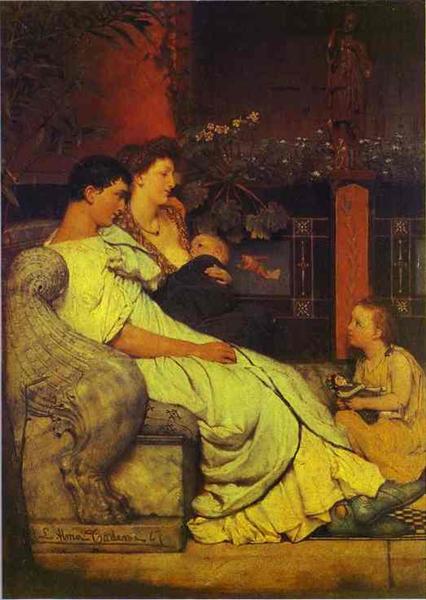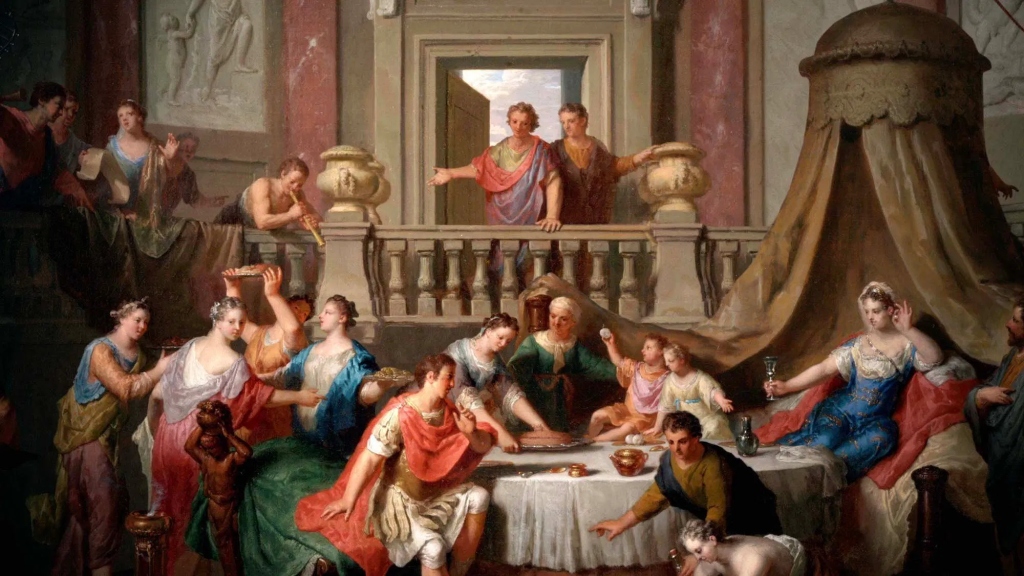The exact role and status of women in the Roman world and indeed in most ancient societies, has often been obscured by the biases of ancient male writers, along with nineteenth and twentieth century male scholars.
A situation only relatively recently being addressed by modern scholarship which has sought to more objectively assess women’s status, rights, duties, and representation in the arts and their daily lives.
In this video, we will look at the role of Women in ancient Rome in the areas of Mythology, Family life and women in the wider society including women in religion. We will also cover the Madonna-whore dichotomy in Roman times which can be said to be at the root of sexism in the modern world.

Let’s begin with Women In Mythology.
Unlike some other ancient cultures such as the Greeks who had formed a creation myth where woman was a creature secondary to man and, more specifically, in the form of Pandora, a bringer of unhappiness and vices, the Romans had a more neutral approach where humanity, and not specifically the male, was created by the gods from earth and water.
Ovid’s Metamorphoses, for example, does not specify whether the first human was a man or a woman. At least in a physical sense then men and women were not regarded as belonging to a different species as in the Greek creation myths.
One of the most famous early episodes in Roman mythology that reveals much about attitudes towards women, is known as the Rape of the Sabine women.
In the story, the first settlers of Rome abducted women from neighbouring tribes, taking them as their wives. One of the reasons for this action may have been a desire to form local alliances through blood ties. Naturally, these tribes sought to reclaim their women and so declared a state of war.
However, the abducted women – led by Hersilia, the wife of a Roman and the daughter of a Sabine, stands between her husband and her father,placing her babies between them to prevent bloodshed.
The story echoes the important role women played in linking families in Roman society, to bind their family of birth with that of marriage.

Women & The Family.
In many cases Roman women were closely identified with their perceived role in society which was the duty of looking after the home and to nurture a family and in particular, to bear legitimate children. As a consequence, female children were sometimes married even before puberty but typically around 20 years old. The early marriages were to ensure the woman had no sexual history which might embarrass the future husband.
The Roman family was male-dominated, typically headed by the most senior male figure. Women were subordinate and this is reflected in Roman naming practice.
Male citizens had three names: praenomen, nomen, and cognomen, whilst all women in the same family were referred to using the feminine version of the family name. A married woman could keep her maiden name or be referred to using her husband’s name. Within the family women would attend to the home and its slave workforce, work on handicrafts, and upper class females might also study academic subjects such as literature and philosophy.
This close dependence of women on their male relatives was reflected in such matters as law & finance where women were legally obliged to have a nominated male family member act in their interests.
The only exceptions to this arrangement were women with three children, freed women with four children, and Vestal Virgins. This rule was designed to keep property, especially inherited property, in the male-controlled family, even if male and female offspring had equal inheritance rights under Roman law.
However, in actual practice, families may not always have followed the letter of the law in this area. and there is evidence of women running their own financial affairs, owning businesses, and running estates, especially in cases where the principal male of the family had died on military campaign.
Another, even more chauvinistic explanation of this rule which allowed women to inherit and own but not control property was that they were thought incapable of managing such affairs for themselves.
For example, this view that women had weak judgement was expounded by the Roman statesman, lawyer, and philosopher Cicero.
Roman law did, though, at least stipulate that a wife’s property be kept separate from her husband’s (excepting the dowry) and it could be reclaimed following a divorce.
Separation by divorce was easily achieved by both parties under Roman law but any children of the couple legally belonged to the father or nearest male relative if he was no longer living.
In the later empire, and especially following legislation imposed by The Emperor Constantine, divorce became much more difficult, especially for the female party.

Women In Wider Society.
Roman women had a very limited role in public life. They could not attend, speak in, or vote at political assemblies and they could not hold any position of political responsibility. Whilst it is true that some women with powerful partners might influence public affairs through their husbands, these were the exceptions.
It is also interesting to note that those females who have political power in Roman literature are very often represented as motivated by such negative emotions as spite and jealousy, and, further, their actions are usually used to show their male relations in a bad light.
Lower class Roman women did have a public life because they had to work for a living. Typical jobs undertaken by such women were in agriculture, markets, crafts, as midwives and as wet-nurses.

Women In Religion.
As for women in religion, Roman religion was male-dominated, but there were notable exceptions where women took a more public role such as the priestesses of Isis (in the Imperial period) and in the case of the Vestals.
The Vestal Virgins, served for 30 years in the cult of Vesta and they participated in many religious ceremonies, even performing sacrificial rites, a role typically reserved for male priests.
There were also several female festivals such as the festival of Juno, the birth goddess, celebrated annually by Roman matrons on March 1st.
And the festival of Bona Dea, associated with chastity and fertility in Roman women as well as healing, and the protection of the state and people of Rome.
Women also had a role to play in Judaism and Christianity but, once again, it would be men who debated what that role might entail.

Madonna vs.Whore Dichotomy
Roman women could be separated between those who were considered respectable, the Madonna. and those who were not, identified as, you guessed it, whore.
Many Roman males had the somewhat hypocritical stance that their female relations should be honourable and chaste guardians of morality while at the same time they were more than willing to avail themselves of the services of lovers and prostitutes.
It is interesting that women were considered to belong either in one group, or the other, and that there was no third category.
The distinction between these two groups was not just a moral distinction. but also one that would determine a woman’s rights in roman society, for prostitutes and other lower class women had even fewer rights than women of a higher social status. Prostitutes and waitresses, for example, could not prosecute for rape, and the rape of slave women was considered merely as property damage sustained by the owner.
By separating women into two distinct groups, one pure and the other sullied, Roman society had the means to keep women from seeking power. Women who stepped out of the norms of society, could easily be cast from a higher status with more rights into a lower status where she had no rights at all.
Contemporary historians and archaeologists have unearthed significant evidence that shows how women were subjugated to different rights, titles, duties, and restrictions compared to their male counterparts.
In conclusion, as you can see, the life of a woman in Ancient Rome afforded women with fewer freedoms than males and the measures used to keep women from power where embedded in Roman mythology, family structure and ancient Roman core ideals.
Source
Cartwright, Mark. “The Role of Women in the Roman World.” World History Encyclopedia. World History Encyclopedia, 22 Feb 2014. Web. 14 Jun 2021.
